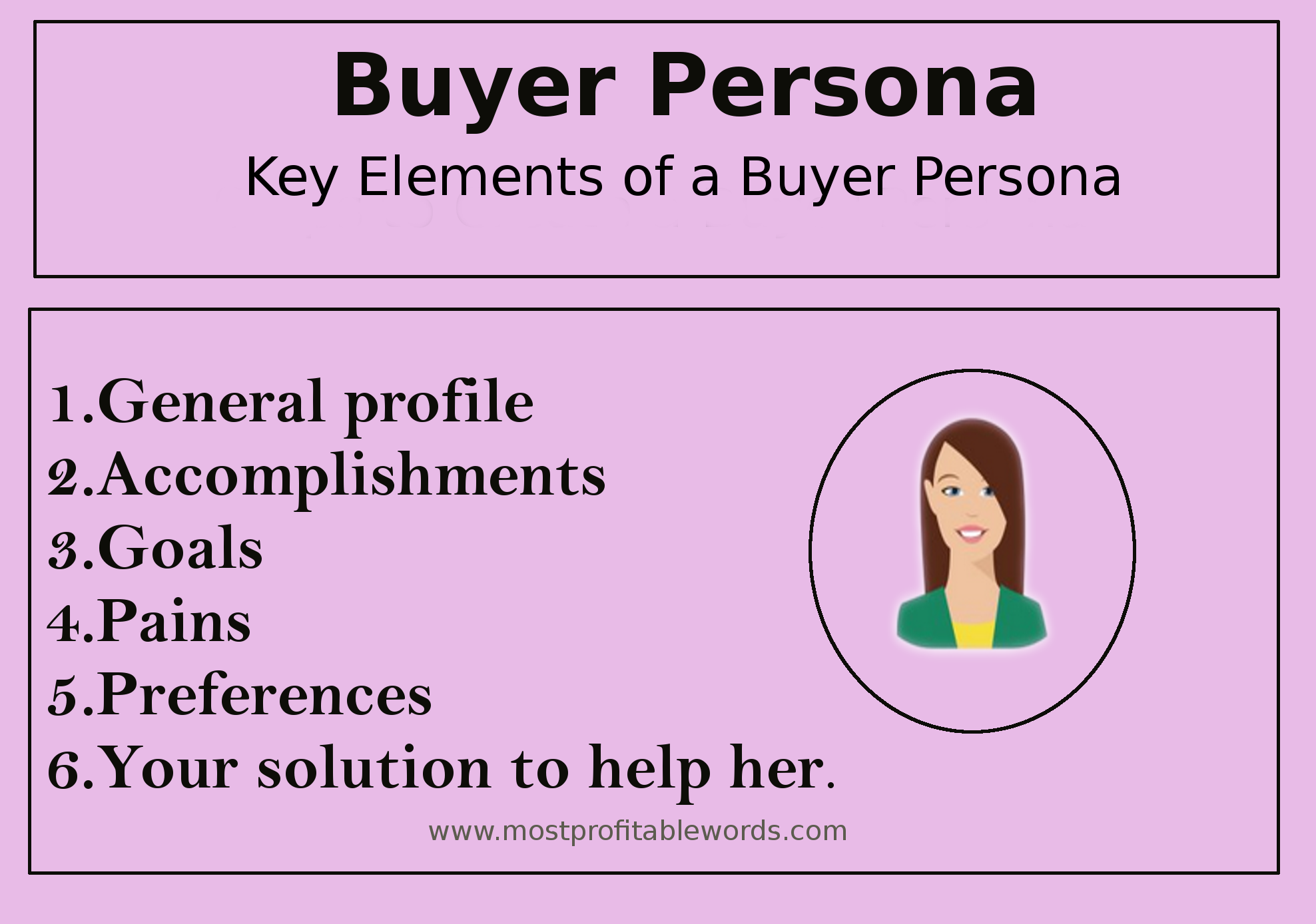
The Importance of Knowing your Target Audience
March 16, 2021
“I can’t write without a reader. It’s precisely like a kiss—you can’t do it alone.” ― John Cheever
A target audience is that group of people who will be happy to pay for your services or products if they find your solution is the best and provides them with value for a fair fee.
This type of customer feels at ease and satisfied after consuming your product because you have made their lives easier. They recommend you to their friends and buy your product over and over again. They love your brand personality.
 Please contact for credit or removal
Please contact for credit or removal
To satisfy your target audience you need to know who they are, what they do, where they are, what problems they have. It’s also important to know what feelings their struggles trigger, what keeps them back from taking action to solve that problem.
Your definition of the target audience must be accurate and deep because you really want to understand what's going on in your prospects' minds, what their pains and dreams are.
The better you know your target audience the more successful you will be in your business. So, if you run a small business, don't hesitate to get highly specific and look for a gap in the market to serve.
Targeting a specific group of consumers allows you to create a particular message that will fulfill their needs and desires.
“Speak to your audience in their language about what's in their hearts..” ― Jonathan Lister.
How do you Find your Target Audience?

1.Your product or service solves certain problems, right? So people with those difficulties you solve are potentially your target audience. This gives you a first and general vision of your target audience.
If you sell school books offline or on your e-commerce platform, parents with children at school will be your target audience; if you offer relaxed vacations in the fall, you probably have to target retired people or people without children.
If you sell anti-age cream, your target audience will be women over forty who want a solution to those ugly wrinkles that threatens their ability to look young and sexy.
This simple information gives direction to your marketing activities, but you still need to look deeper.
2. Check out your competition. Analyze what groups they target, what they offer to their intended audience and how successful they are. These groups can be your target audience too.
Questions You Must Ask About Your Competitors
-
what’s their unique selling proposition?
-
What are their strength and weaknesses?
-
What's the difference between what they offer and you?
-
What’s customers’ opinion about their products?
-
What kind of people buy your competitors’ products?
-
How do they engage with customers?
With all these questions answered you can adjust and improve your business messages to engage at least part of that group.
3. Narrow down the list of target groups. If you run a small business it would be extremely difficult to compete with big companies who generally have a professional marketing team, big budget for running display and native ad campaign almost non-stop. a long-term relationship with the public.
Serve a small group within that big market. Find your niche. Find a gap in the market and deliver value. Going back to selling anti-age cream, which is a big market, you may narrow down your group to women who need anti-age cream for dry skin or anti-age cream for ladies who have skin problems.
You get the idea. Focus on a small group and develop a long-term relationship.
Why is it Important to Get a Deep Understanding of your Audience
People jump to the internet in search of the best solution for their needs, compare different offers, read blog posts, reviews and then choose the one that speaks to their heart and mind.
Another point to bear in mind, that people may desire to consume the same kind of product but their motivation is completely different.
For example, the reason why a group of people want to lose weight could be to feel themselves sexier, more attractive and seduce the man or lady of their dreams.
On the other hand, you’ll find people who want to lose weight for health reasons. Overweight causes type 2 diabetes, high blood pressure, heart disease and strokes among others.
As you can see here you have two different target audience because their motivation to consume a product is different.
And when you speak to them, you’ll have to use different messages. Dig deeper and learn about their interests, preferences and even the kind of benefits they look for when shopping.
It would be a great help to learn about previous experiences of your target audience with your product or similar ones.
This way you will be well-equipped to create compelling copy for your landing pages, social media posts, email campaign. They will resonate with the intended cluster of people.
What are the Basic Human Needs?

[Image source](https://commons.wikimedia.org/wiki/File:Maslow%27s_hierarchy_of_needs.svg alt: Maslow's hierarchy of needs)
If you find it hard to discover what your target audience’s need are, you can have a look at Maslow's pyramid of needs and discover the basic human needs that will lay behind any human behavior.
- Physical Requirements: fresh food, drinking water, clean air, clothing, rest, and shelter.
- Safety: personal security, health protection, a place to live, a stable job.
- Social Needs: friendship, partnership, family, spiritual and institutional organizations, a sense of belonging to a group and a nation.
- Recognition: Be respected and appreciated by others, have their efforts recognized, accomplishment and self-esteem.
- Self-actualization: the opportunity to learn and grow as a person. People at this level are aware of themselves, they are interested in exploiting their abilities and capacities, fulfilling their potential.
How can Maslow’s Theory be Applied to your Business?
By identifying what humans need are, what drives and motivates people, businesses can communicate all the benefits their product offers in a more effectively way and develop mutually beneficial relationships with customers.
The best way to organize all this information is creating a buyer persona, a thorough description of your ideal customer. Create a description of your ideal buyer and use it as referral information every time you create your campaigns
Questions to Ask When Creating a Buyer Persona

Demographic information
- what are their name?
- Where do they live?
- Are they married or single?
- Do they have children?
- What age are they?
- What’s their annual income?
Educational Background and Accomplishments
- What level of education did they accomplish completely?
- What’s their degree?
- What industry does it work in?
- What company do they work for?
- What makes them successful in their job?
Pains and Goals
- What problem do they face?
- How do they feel about that problem?
- What makes them look for a solution?
- What are their goals?
- What are the pains that keep them back from a solution?
What type of Content do They Prefer?
- Easy-to-understand written material
- Information videos
- Podcasts
- Webinars
Shopping Preferences
- When do they do their shopping?
- What are their favorite companies and online shops?
- What are their shopping preferences?
- What benefits do they look for when shopping?
Your Business Solutions
- What do you have to offer them to ease their pain?
- Why do they have to trust you?
- What level of authority do you have in the industry?
- What need on Maslow’s pyramid does your product solve?
- What is your unique selling proposition?
Use the Words your Customers Want to Listen
After all the detailed information you have already collected, you still need something else. Get information about what they talk about, what they like and dislike.
1. Conduct surveys. This is a good way to collect relevant information for your marketing-- monkey survey.
2. Read reviews about similar products and services. They are a great source of valuable information to include in your marketing campaigns.
3. Experiment with content and offers. Document all your activities and get track of what have worked for you and not. Modify different aspects and test again.
4. Be active on social media platforms. Get information straight from your customers. Participate in conversations and become part of them. You’ll get lots of information that will let you discover some patterns and trends in relation to social media usage: behaviors, content sharing, connections between individuals and more. This compilation of information should guide you when creating an effective business strategy.
Conclusion
When you know your target audience deeply you can design new products and services based on accurate, trustful and first-hand customers’ behavior information, create compelling headlines and guarantee your success.
Need packs content for you website and social media? Contact us
Add a comment